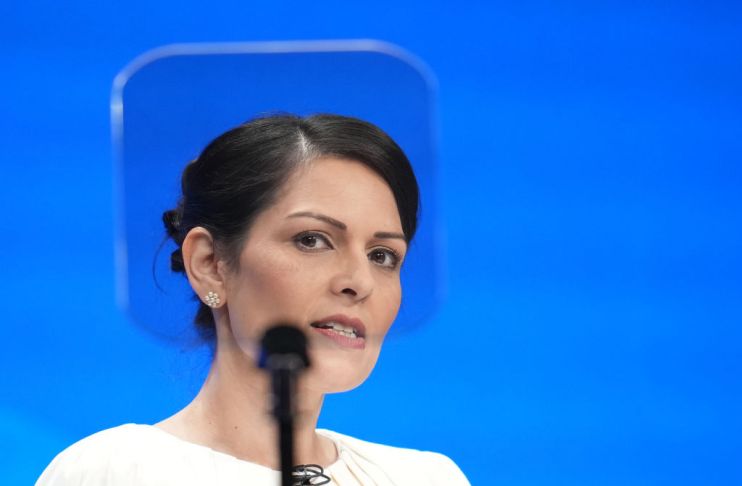From Calais, with love: CCTV funding rows capture our migration challenge

In the first five weeks of war in Ukraine, more than four million people have fled their home, according to the United Nations. The bulk of these have gone to Poland, but many are trying to find permanent homes elsewhere in Europe.
Before introducing the Homes for Ukraine scheme, the UK was scrambling to process visa applications from Calais and Paris. Home Secretary Priti Patel was ultimately taken off the case after she was accused of having a “lack of humanity”. In France, she’s made few friends, despite concerted efforts to find a “joint” solution to the flood of refugees making their way across the Channel. Now, she has to contend with French coast mayors, furious over an outstanding debt for CCTV cameras installed on their shores.
The constant bickering between London and Paris shows two governments failing to take responsibility for the fate of those seeking refuge in their countries. The bloody conflict in Ukraine has given birth to a new generation of refugees, but many have come before them – here in the UK, especially through the Channel.
On a more basic level, as the weather improves, more people will be tempted by calmer seas to make the crossing on vessels barely worthy of a paddling pool.
Earlier this year, the UK announced Project Terminus – a plan to install nearly 40 high-tech CCTV cameras on the French border in an attempt to stem the tide of migrants making dangerous journeys. It was meant to reinforce the Treaty of Sandhurst between the UK and France, a pact designed to stop small boat crossings. But it has disintegrated into a fight over who pays for it, with French mayors claiming they were never reimbursed for the cameras.
The cameras will be stationed on different French locations. It is not clear whether they’ll have facial recognition technology. They will have, however, plate recognition capability to spot suspect vehicles. It also remains unclear whether British authorities will be able to access the footage. Given that border control remains a fight over sovereignty, it seems unlikely. But if it is indeed the British government footing the bill, constituents in Dover won’t be happy.
Project Terminus is a by-product of a broader development in border control – an increase in digitalisation and in the use of new technologies. It’s not only CCTVs: it’s data sharing, mobile phone extraction, algorithms. The prevalent narrative is one of efficiency: by digitalising border control, the Home Office shifts the tone from one of politics to one of procedure.
While this sounds logical, pressure groups have warned about the ramifications.
“The creeping surveillance technology and digitalisation of the immigration system is a growing concern because adequate safeguards are not in place to protect individuals”, said Fizza Qureshi, chief executive of the Migrant’s Rights Network.
An example of this is mobile phone extraction. When someone reaches the border, authorities can ask to look at their phone and retain information. They need consent to do that. But in situations of extreme vulnerability, this is blurred. Refugees and asylum seekers might not understand the language, or assume it’s par of the course to be forced to hand over your phone and give away your data in the UK, says Sahdya Darr, Migrant Digital Justice Programme Manager at Open Rights Group.
The Home Office has consistently bungled efforts to introduce technology. The government’s attempt at a “traffic light” visa system, based on an algorithm, had to be removed because it was biased against the global south.
The repercussions of installing a host of cameras on French shores might be bigger than we expect. “Often with technologies at the border and their privacy consequences it is not necessarily the privacy law controlling the technology, but the other way around”, says Samuel Singler of the Centre for Criminology at the University of Oxford.
If these cameras do have facial recognition systems, it will be the French government’s responsibility to check whether that fits with their laws. If it doesn’t, privacy laws might be changed accordingly – after all, they’re quite flexible. According to Singler, these technologies have a problematic function creep issue: their surveillance purpose seems initially limited, but it can easily open up further surveillance if the political climate allows. With Marine Le Pen, a strong opponent of immigration, about to face off Emmanuel Macron we should prepare for all eventualities.
The use of technology in border control is not inherently bad. Afterall, drones could be deployed to prevent people drowning by stopping them crossing in the first place. The vast stretches of coast are near impossible to patrol. But the challenge for the Home Office is working closely with the French to ensure any devices deployed – and paid for – adhere to our own privacy standards as well. Otherwise we risk becoming enablers to a system which exploits vulnerable people’s ignorance. It neatly captures the long, checkered history of the Channel: unless we can reconcile with France, we will continue to struggle against a system geared against the most vulnerable.